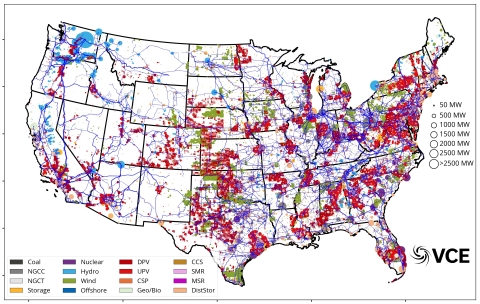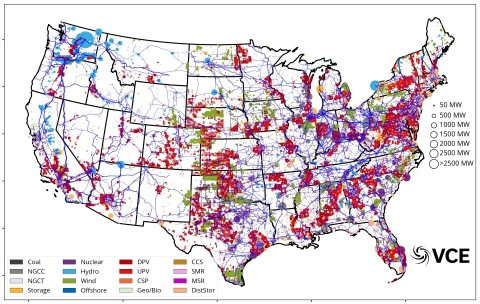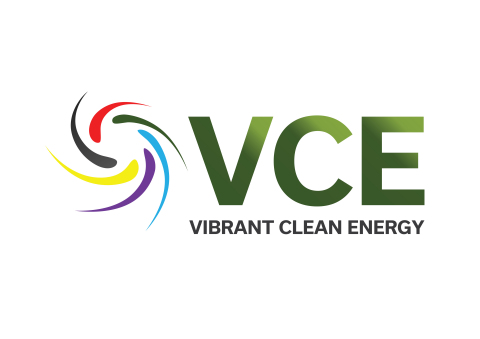BOULDER, Colo.--(BUSINESS WIRE)--The full technical report of the recent advanced grid study “Why Local Solar for All Costs Less: A New Roadmap for the Lowest Cost Grid” fills in the details of how and why distributed solar and storage assists lower-cost pathways to a clean electricity grid. It shows that when including co-optimization of the distribution interface, the local solar and storage supports the development of cleaner electricity on the utility grid and lower costs for all customers.
The savings for a clean electricity grid are in excess of $473 billion (not including any indirect benefits). The “augmented” version (with distribution co-optimization) for clean electricity is over $88 billion lower cost than business as usual (without distribution co-optimization). In the augmented clean electricity scenario, the model developed 247 GW of distributed solar, 160 GW of distributed storage, and 20 GW of demand-side management, while deploying 800GW of utility-scale wind, 800 GW of utility-scale solar, and 192 GW of utility-scale electric storage. The buildout of utility-scale wind and solar is increased by co-optimizing the distribution infrastructure.
The half-a-trillion dollars in savings emerges from the distribution demand (observed from the utility grid) becoming more flexible. The flexibility unlocks the distribution demand enabling it to shift to varying supply rather than being fixed and almost entirely relying on supply conforming to demand. This new found flexibility reduces spending in the distribution grid for peak consumption from the utility grid, facilitates more variable renewables (VRE) on the utility grid (reducing redundant excess utility-grid capacity), and eases the morning and evening transitions where VRE output and demand are at their more disparate.
The study relied on a state-of-the art grid planning tool developed by Vibrant Clean Energy. The tool - called WIS:dom®-P and developed by Dr. Christopher T M Clack – analyzes trillions of data points including every potential energy resource and the direct costs and benefits associated with bringing the most cost-effective resource mix to the electric grid. The model was recently updated to take into account, and enhance the delivery of, local solar and storage generation located closer to customers on the distribution side of the grid.
The main takeaways from the advanced modeling show:
- A clean electric grid that leverages expanded local solar and storage is $88 billion less expensive than a grid that does nothing different than we’re doing today (no clean electricity mandates and not leveraging expanded local solar and storage). This proves that moving to clean electricity targets can save the country money versus the status quo.
- Under a national 95% clean electricity target, leveraging expanded local solar and storage can save the U.S. $473 billion by 2050 compared to a clean electricity grid that doesn’t expand local solar and storage.
- More local solar and storage unlocks the potential of utility-scale solar and wind. The lowest cost grid requires a lot more utility-scale solar. In fact, retiring fossil-fueled power plants that run infrequently and deploying local storage more efficiently will help integrate 798 GW of utility-scale solar and 802 GW of utility-scale wind by 2050.
- Scaling local solar and storage results in over 2 million local jobs by 2050. The cost analysis accounted for direct costs and benefits only, but local solar and storage brings additional societal benefits to communities such as jobs, increased economic development, increased resilience, and more equitable access to the benefits of renewables.
“This study indicates that the current practice of ignoring (or assuming) distributed-scale resources in utility plans will result in higher costs for customers, higher GHG emissions, and lower job prospects for the industry compared with coordinated planning,” said Dr. Christopher T M Clack, founder and CEO of Vibrant Clean Energy. “Furthermore, the modeling tools required to provide insight for all stakeholders should include computations that resolve the distribution resources at some granularity to perform analysis on the co-benefits."
------------------------------------------------------------------------------------------------------------------------------------------
About Vibrant Clean Energy: A nationally recognized energy grid modeling firm based in Boulder, Colorado. VCE® creates computer optimization software to study pathways for energy systems futures. It also performs studies using WIS:dom® to provide expertise in new arenas of electrification, decarbonization and variable resources. The mission of VCE is to help facilitate universal, sustainable, and cheap energy for everyone. www.VibrantCleanEnergy.com
This executive summary of the report can be downloaded:
https://www.vibrantcleanenergy.com/wp-content/uploads/2020/12/WhyDERs_ES_Final.pdf
The full technical study report can be downloaded:
https://www.vibrantcleanenergy.com/wp-content/uploads/2020/12/WhyDERs_TR_Final.pdf
The accompanying result summary slide show can be downloaded:
https://www.vibrantcleanenergy.com/wp-content/uploads/2020/12/LocalSolarRoadmap_FINAL.pdf
The WIS:dom®-P model output national capacities spreadsheet can be downloaded:
https://www.vibrantcleanenergy.com/wp-content/uploads/2020/12/Summary-Capacities_Nov2020.xlsx.zip




